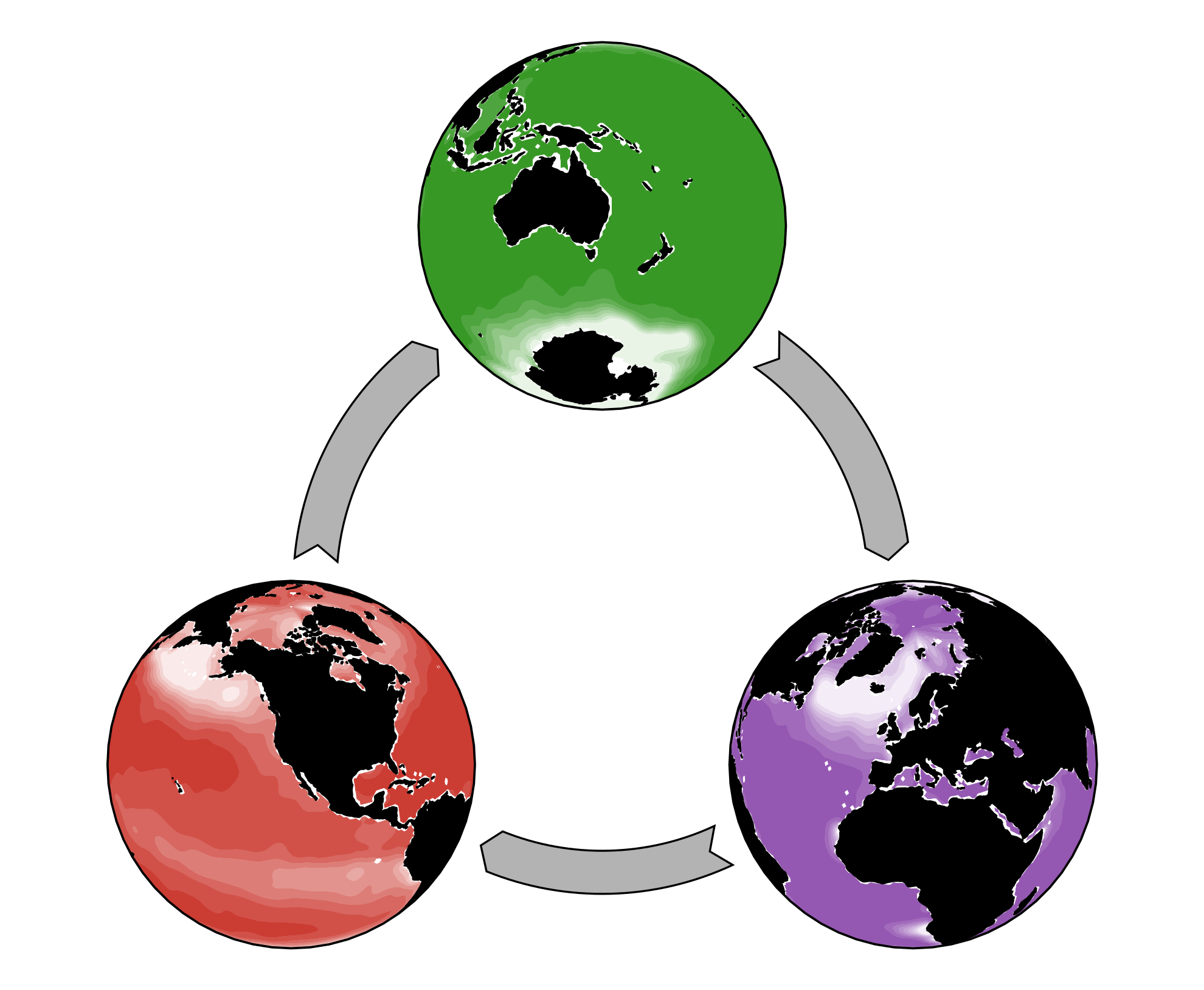
The ideal tool for exploring global marine biogeochemical cycles.
AIBECS (for Algebraic Implicit Biogeochemical Elemental Cycling System, pronounced like the cool ibex) is a Julia package that provides ocean biogeochemistry modellers with an easy-to-use interface for creating and running models of the ocean system.
AIBECS is a system because it allows you to choose some biogeochemical tracers, define their interactions, select an ocean circulation and Voilà! — your model is ready to run.
If you are new to AIBECS, head over to the documentation and look for the tutorials. (You can also click on the big "Documentation" badge above.)
This package was developed to exploit linear-algebra tools and algorithms in Julia to efficiently simulate marine tracers. AIBECS represents global biogeochemical cycles with a discretized system of nonlinear ordinary differential equations that takes the generic form
where
The operator
represents the effects of advection and eddy-diffusion
(where
Lastly, the right-hand-side,
To simulate tracers using the AIBECS, you just need to define the transport operators
Note that AIBECS is essentially in maintenance-only mode, and might remain so for a little while. Although it works (the software has been published and has been used in publications), I consider AIBECS still in development, with a bunch of features and fixes that are currently missing, but I do not have enough time to work on it unfortunately. Please get in touch if you have some bandwidth and/or funding and are interested in collaborating or developing AIBECS!
If you use this package, please cite it.
If you use data provided by this package (like the ocean circulation from the OCIM), please cite them as well.
For convenience, all the references are available in BibTeX format in the CITATION.bib file.
Also, if you want to do research using the AIBECS, and you think I could help, do not hesitate to contact me directly (contacts on my website), I would be happy to contribute and collaborate!
The authors acknowledge funding from the Department of Energy grant DE-SC0016539 and from the National Science Foundation grant 1658380.









